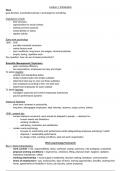Class notes
Very clear and detailed lecture notes for Work Psychology!
- Course
- Institution
This summary contains all the information of the 12 lectures, including helpfull tables and graphs from the slides. With studying just this summary I got an 9.0 on the exam and I'm sure you can too :)
[Show more]



